In this post of mine, we will learn how to use Windows 8. Let me caution you in advance, that you may have to first unlearn a few things before you can start learning navigation in Windows 8. There is, in my opinion, quite a steep learning curve for basic navigation involved here, especially if you are a regular Windows user and do not consider yourself to be a geek. Windows 8 may make great sense on a Tablet and touch devices, but on a regular desktop or a laptop, well, you may have to develop a few new ways of thinking.
Learn how to use Windows 8 – A Tutorial
In this post, I will not talk about tweaks, tricks, or features, but just give you some basic tips to get you started. The tweaks and trips and features discussion can come later. First, you need to get your feet wet and learn how to navigate Windows 8 start screen and desktop …and actually, even learn how to shutdown Windows 8! Once you have mastered this, you will see that finding your way around Windows 8 is as easy, if not more than it was, in Windows 7.
Once you boot into Windows 8, you will first see a lock screen. It will show you places where you can visit quickly, like for example your mail Inbox or your messages or updates.
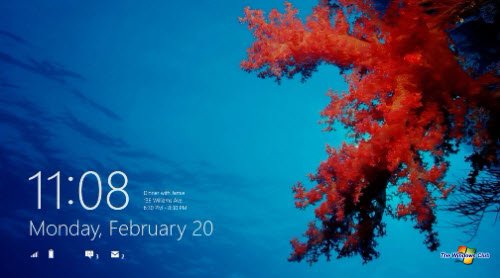
To sign-into you PC, push the lock-screen up. You can sign in using a picture password, a regular Windows username, and password or with your Microsoft Account credentials. You can create two kinds of accounts: a local account for that PC only, or a Microsoft account, which works on all the PCs running Windows 8. You can select any one of these options as your login method.
Once you are logged in, you will see the new Windows 8 Start Screen, which is the home page of your Windows 8 PC. No longer will you see the familiar desktop, your favorite wallpaper, the task bar or the start button. The Start Screen is the new program launcher and replacement of the start menu. So get used to this new Start page!
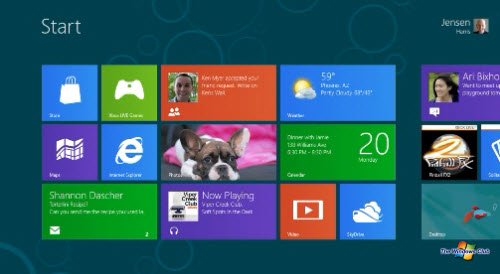
The Start Screen displays tiles that represent apps, people, programs, shortcuts and more. The live tiles will always show what is happening on your PC without your needing to launch any particular app.
You can customize and personalize the Start Screen to your taste. You can customize the background screen, color, accent, rearrange the tiles, add or remove tiles, create groups, name/re-name, and more.

You can zoom in and zoom out to see the full list of tiles by moving your cursor to the bottom right corner of your screen, where a tiny magnifying glass image is visible.

In a touch device, the edges are important. In a non-touch device where you are using a mouse, it is the corners that are important!
Windows 8 on a non-touch device
On a non-touch device like a laptop or a desktop computer, the bottom left corner is for Start, if you move your cursor to this corner and click on the small icon that appears, you will be taken to the start screen.
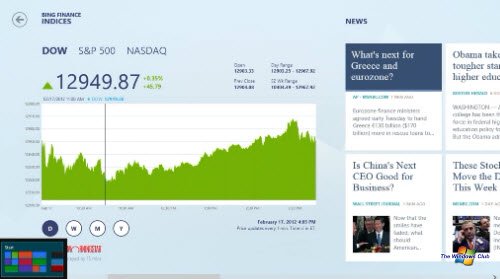
If you want to go back to the app or program that you were just in, you will have to move your cursor to the top left corner and click. If you keep clicking, it will cycle you through the recently used apps. If you move your mouse slightly down, it will open a list of all the recently used apps. Here you can click and switch directly to any app you want.
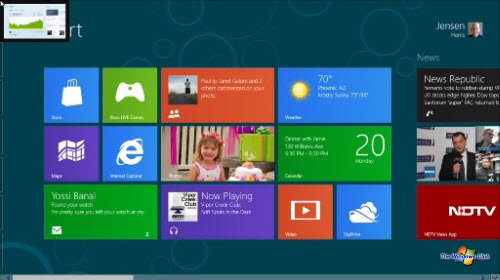
To see all your installed apps, when you are on the Windows 8 Start Screen, simply right-click on an empty part of your start screen.
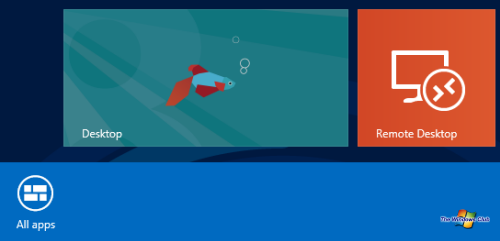
Now click on ‘All apps’ to view and access all your installed apps quickly.
Just look at this way – think of the Start Screen as your new Start Menu and to bring it up, click the Win Flag key. To work at your desktop, click on the Win flag key again. Clicking on the Win Flag key, will alternatively bring up the start screen and the desktop. Once you accept this, you will find working with the Windows 7 desktop and start screen much easier.
While on the desktop, when you move the cursor to the bottom left corner you get the option to visit Start Screen. When you right-click here, you will get a menu option, offering quick links to Explorer, Control Panel, Search, Task Manager, Run, and so on.
When you move the cursor to the bottom-right corner, the Desktop Peek functionality will be activated. When you right-click here, you will see the option to Show and Peek Desktop. The Desktop Peek transparent area may be missing, but the functionality is very much there. To see the Charms Bar, move the cursor to the top-right part of the desktop, or even the start screen.

To see two Windows 8 apps next to each other, you can use the Snap feature that lets you do so. To use this feature, pick and drag one of the apps to your right screen edge.
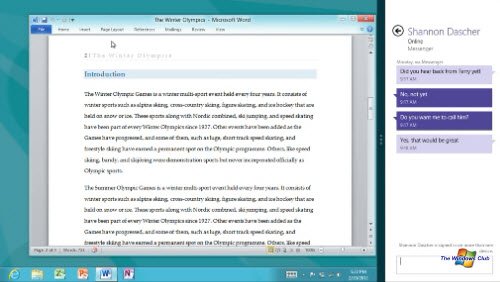
On a Windows 8 laptop or a desktop, keyboard shortcuts will have a very useful role. You may see all the Windows 8 Keyboard Shortcuts here. Also, check out this Ultimate Guide to Windows 8 Keyboard Shortcuts and their Mouse & Touch equivalents.
Windows 8 on a touch device
If you are on a touch device, switching between apps is fast and fluid. Simply wipe in your thumb from the left edge of the screen to switch your apps. If you drag your finger in from the side, it will list down all the apps which are open.
To close a Metro app, you have to simply swipe your finger down from the top, and throw it down towards the bottom of the screen.
In the Metro-style Internet Explorer, switching between open pages is quite easy. You can use your finger to swipe it towards the right or left to changes the open pages. When you swipe down from the top of the screen, you will see a list of all the open tabs. To share a link with your friends, you have to swipe your finger from the right side. This will display the Charms bar. The Charms bar displays some fundamental Windows 8 features available for that app. Here you can select the Share button to share a web link if you wish.
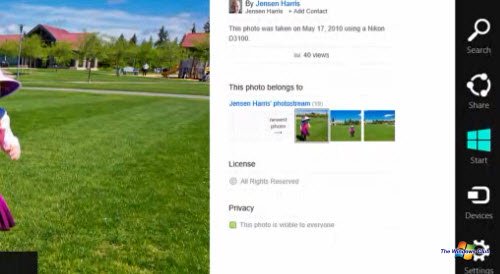
How to shutdown Windows 8
To shut down Windows 8, bring your cursor to the top right corner to bring up the Charms bar.
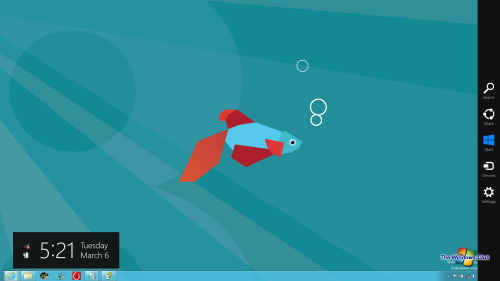
Here click on Settings > Power. Here you will see the options to Shutdown, Sleep or Restart your computer.
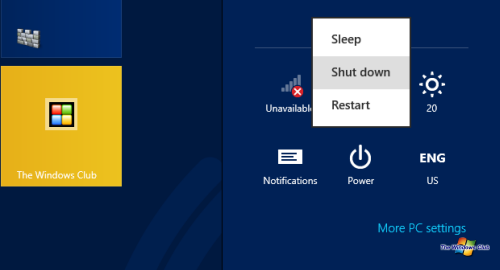
Windows 8 basic How-to Video: Learn Windows 8 basic navigation in 8 minutes
You can watch this 8-minute video tutorial by Jensen Harris, Director of Program Management for Windows experience, Microsoft, to see all this in action, and download this must-have Windows 8 End User Training Brochure.
You can also check out these additional useful videos which will help you get started:
- Touch of brilliance
- Rediscover your Mouse and Keyboard
- Multitasking Metro Apps
- Changing Lock Screen and Start Screen.
Well, this was just the basics in navigating your Windows 8 start screen and desktop. Over the next few days and weeks, we will gradually introduce you to new features in Windows 8 and offer you some cool tips to make using Windows 8 a real pleasure!
Do let us know what you think of the new way of navigating Windows 8 desktop and Start Screen – and if you have any more tips to share.
Nice work around
Hey Anand,
The consumer preview of windows 8 was launched just 8 days back and you’re already an expert. Informative post.
LOL – Just scratched the surface … but thanks anyway, bro!
Oh my God! This is the dumbest thing I’ve seen in many years. I have very little interest in using anything but a desktop at home, and I can’t imagine wanting to touch the screen! I sit 2.5 – 3 feet from my 24 inch monitor and my arms aren’t that long! And as for using the mouse, who told MS that the corners are the easiest place to navigate to? I want to move as little as possible, not have to slide all the way across a the screen to reach a corner! In five years MS will be a minor player in computer OS. Apple, please, have the biggest, baddest Mac you’ve got waiting for me!
I have been learning for a week now and learned most of above. I like the compatibility feature as several programs I have tried to load don’t want to run.
Also I have no sound. Windows 8 does not recognize the imbedded sound card on my motherboard. Still not important as I learn on the 8. May have to install a compatible audio card.
Thanks – Johan
Seems like all professionals will have to move elsewhere… :-(
I can’t see how am I doing to to any useful work on such a system. But the kids are going to love it.
Just for kids.
I wll be going to Mac, for my business.
window 8 still suck– it noting but a updated window 7 plus metro– it not build for laptop or desktop–/ just how many people have touch screen / not many -/- so metro a waste for most people –a other ME and vista
You should make a e-book on this topic.
i am new to window 8…as i click the xbox video..it says your PC IS OFFLINE PLEASE CONNECT TO INTERNET AND TRY AGAIN…and at that moment im having an internet connection…what should i do?please help..thanks
I just joined the modern world again and bought a new laptop with windows 8.
I am slowly but surely learning how to navigate my way around. Can someone please help me learn how & what it means to switch from “Metro” to “Desktop?” When I 1st started learning my way around, a gray bar would show up at the bottom with a wrench, a push pin & a couple of other ones. I cannot get that to show up now. Apparently I need to make that pop up to change from “Metro” to “Desktop.” I right click, but only the side bar comes up. My daughter needs to play her “ABC Mouse” before the trial part ends. Thank You. If anyone has expertise you may also email me. (karen_price@mail.com)
Pressing the “Win Key” will switch between the Metro and the Desktop.
The WinX Menu appears when you right click in the bottom left corner.
The Grey bar or the Charms bar appears to the right side of the screen.
Hope that helps. :)
I have a problem with finding my devices that I connect to my laptop, I have to go to device manager in order to find my devices. then I have to update the device and then it is fine to use. Normally I would connect my USB and then I am good to go. Please let now what I am doing wrong.
Windows 8 SUCKS
What is the “Win Key”?
It is the keyboard key which has the Windows flag on it.
TFS!